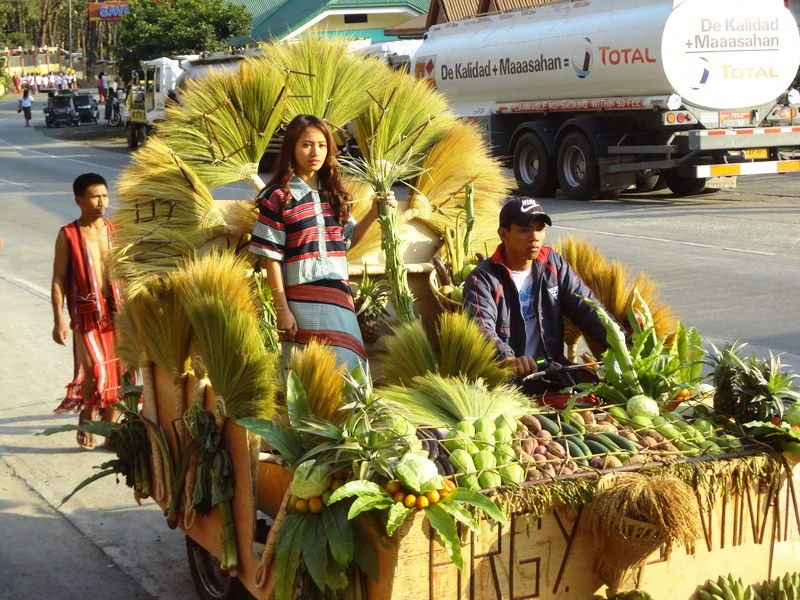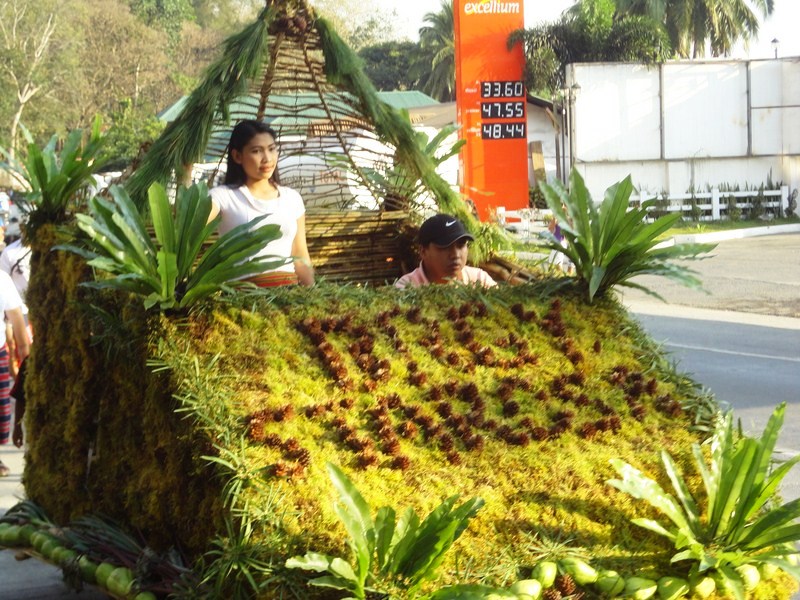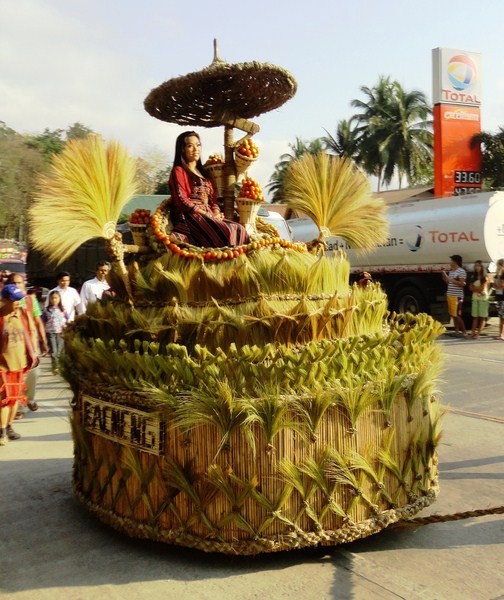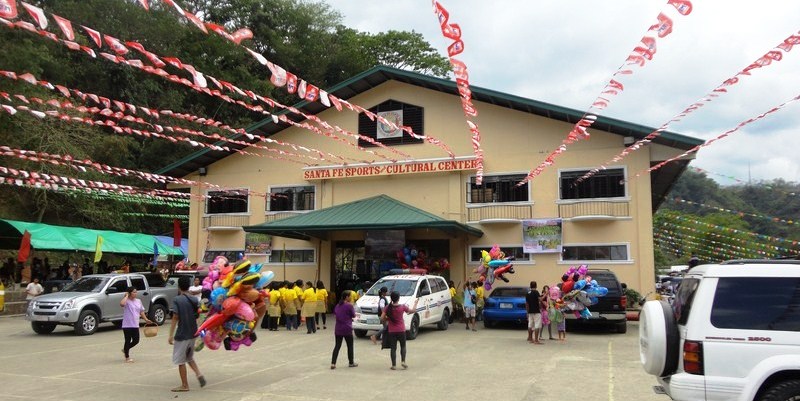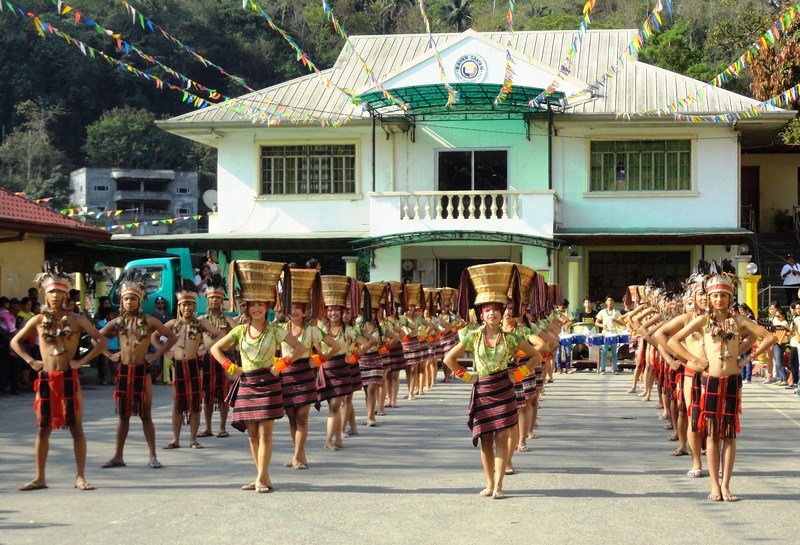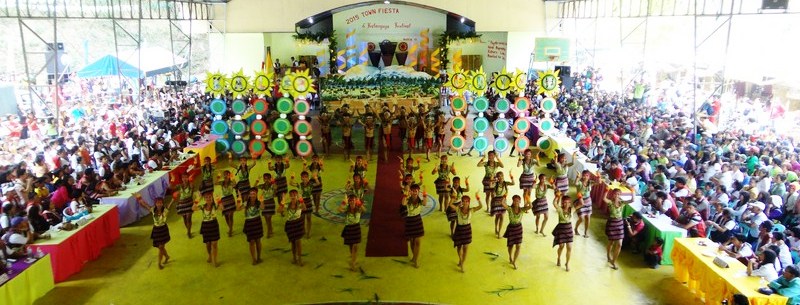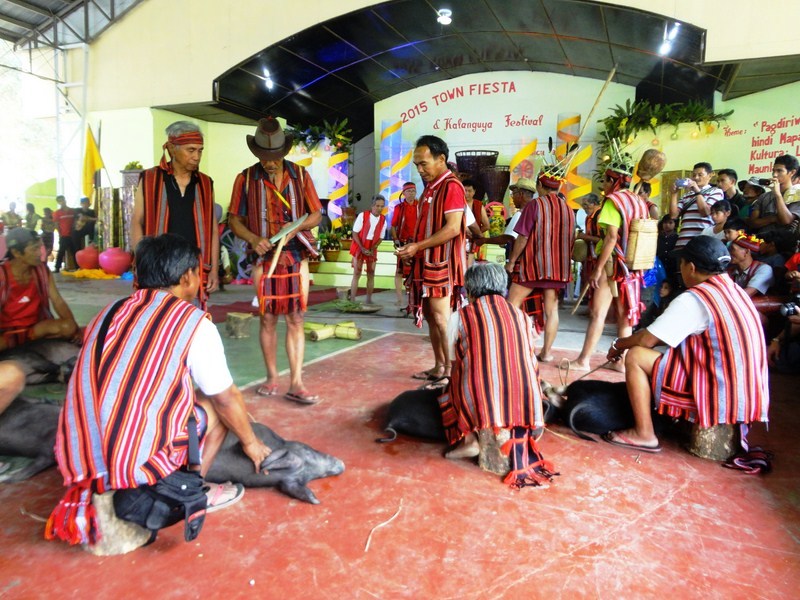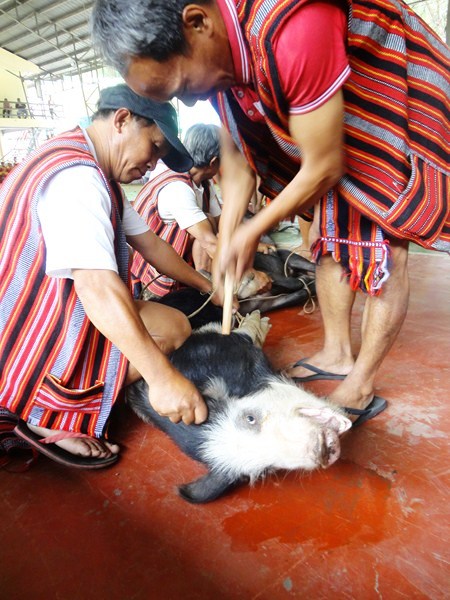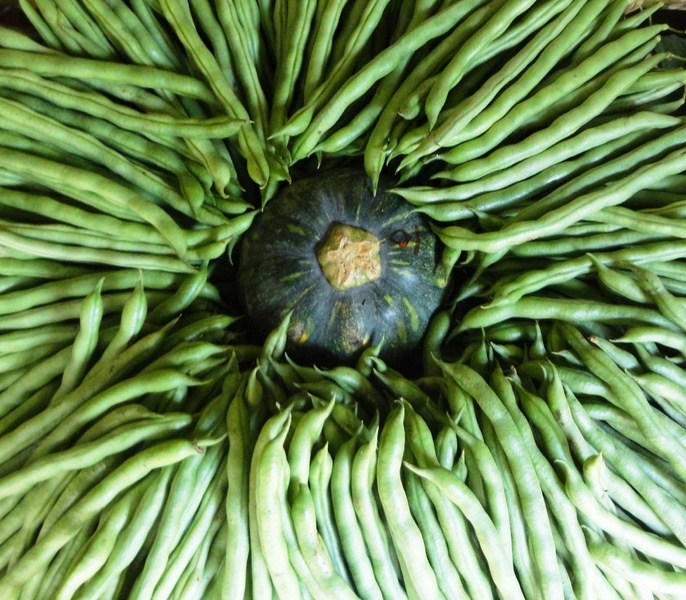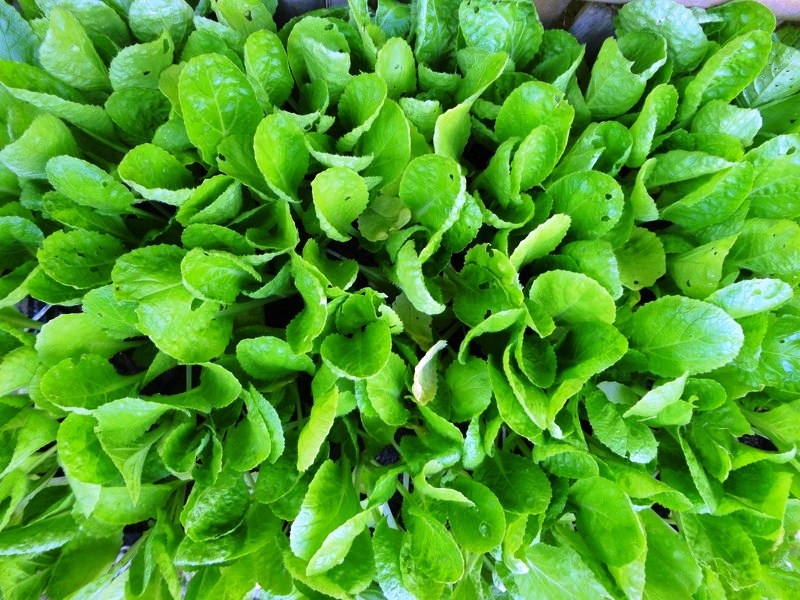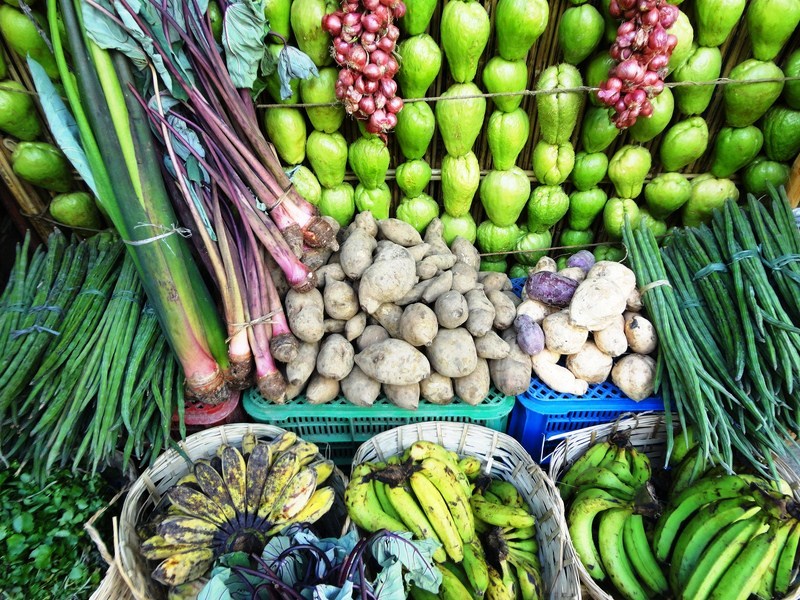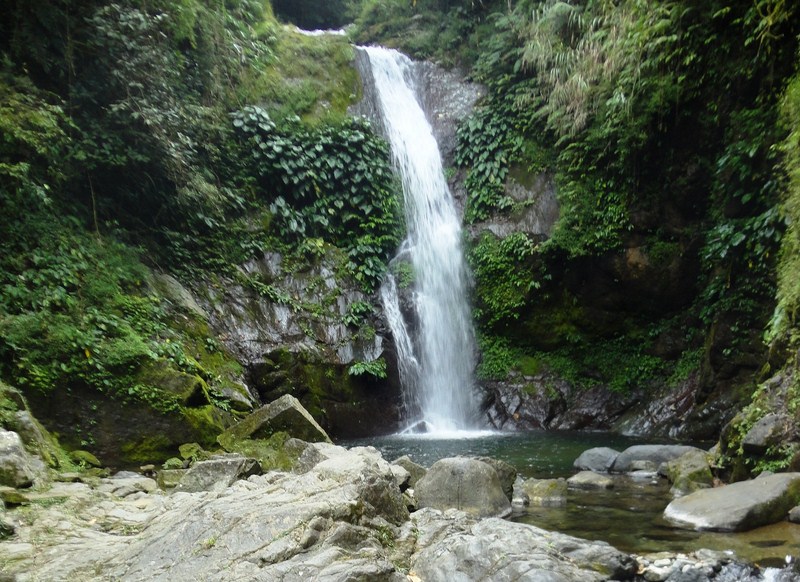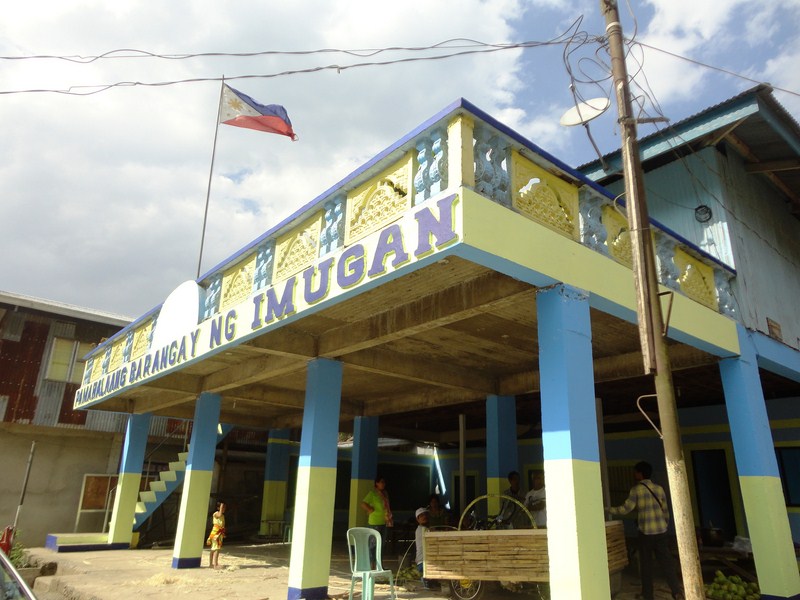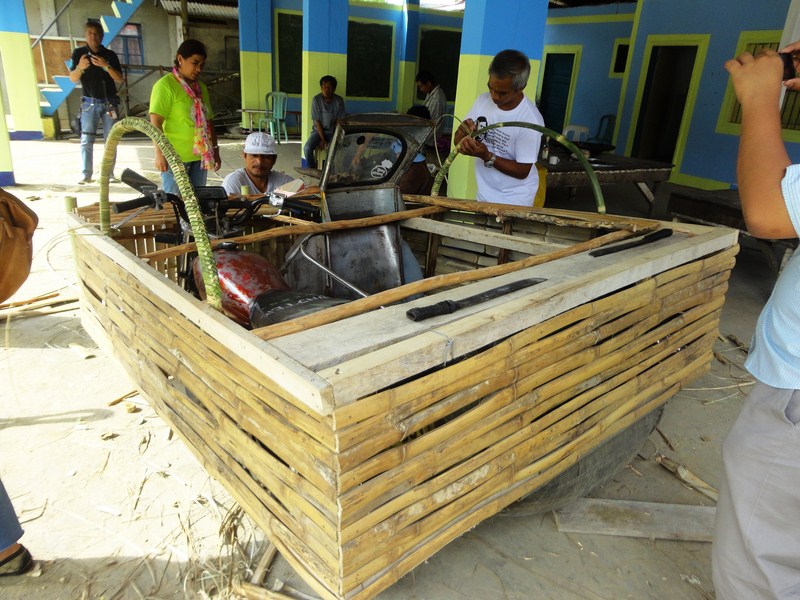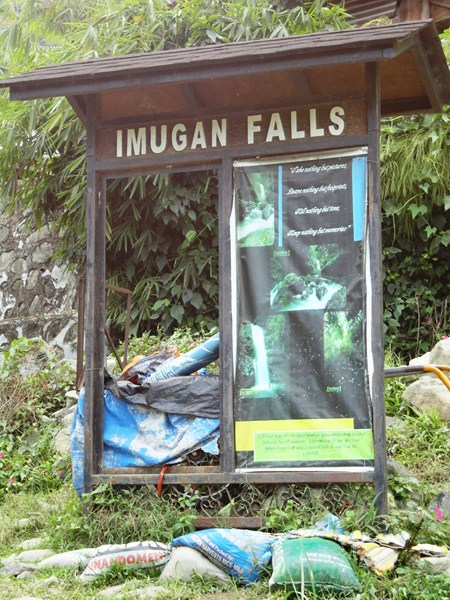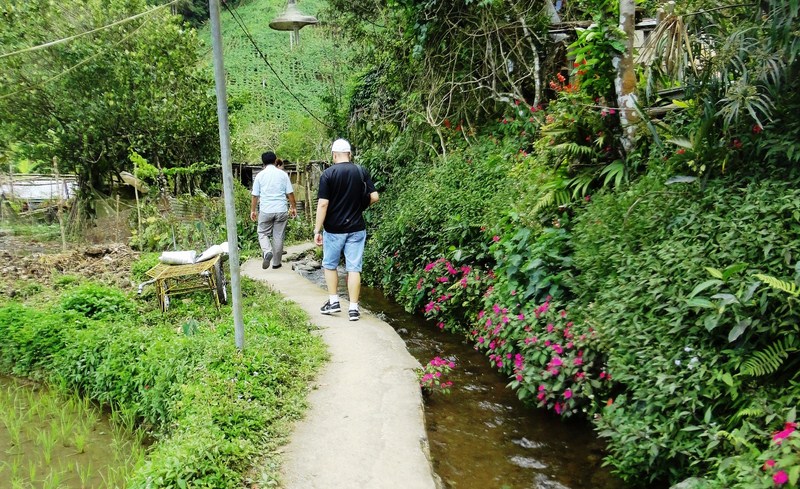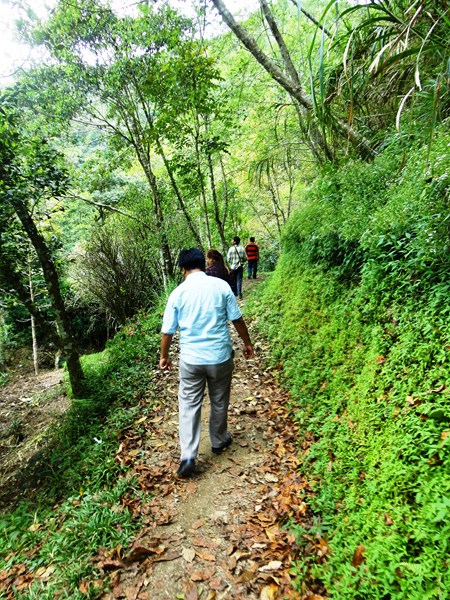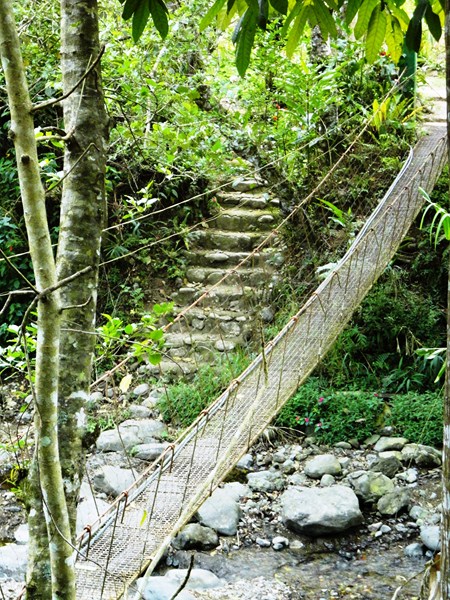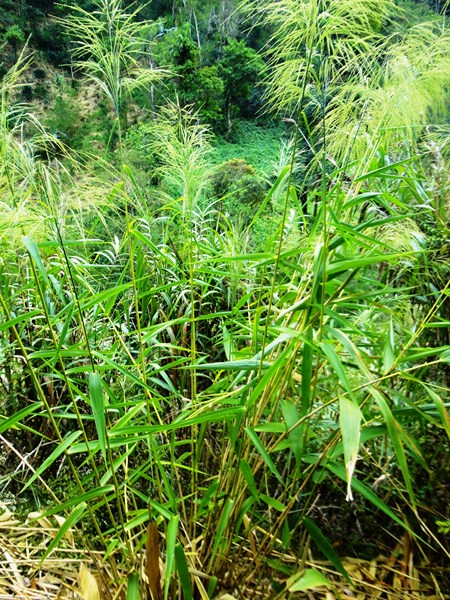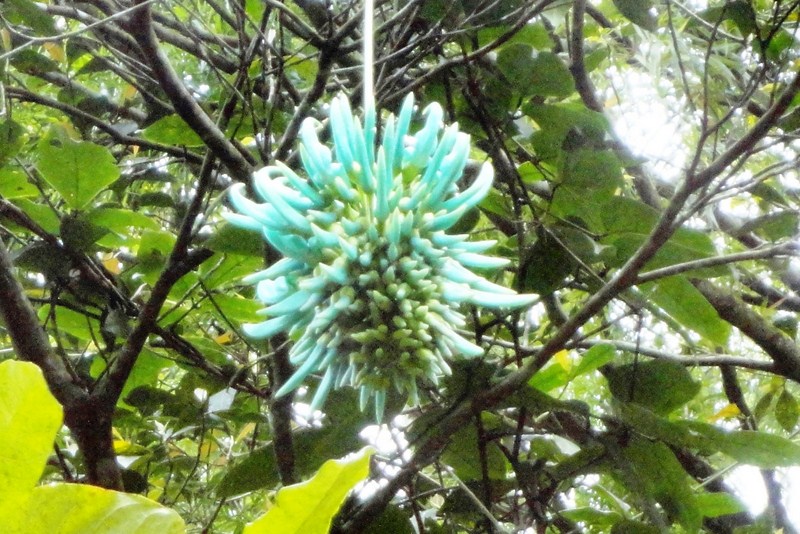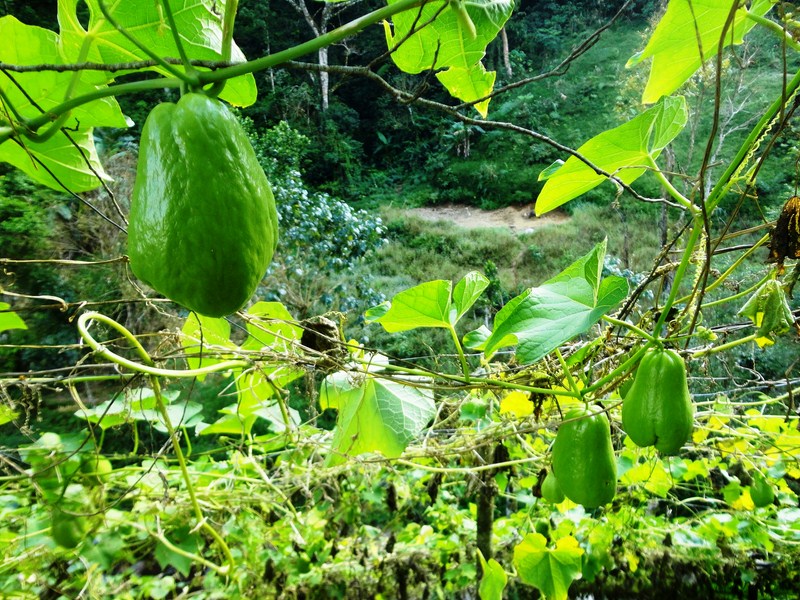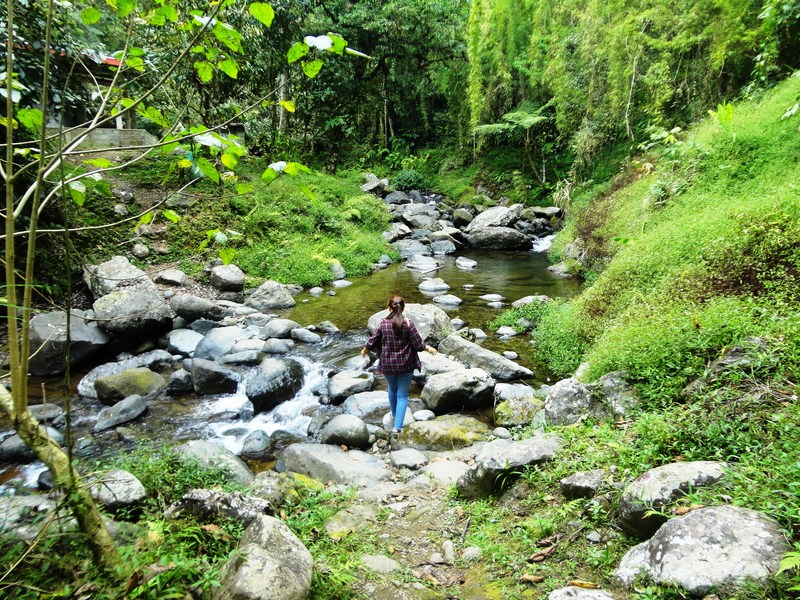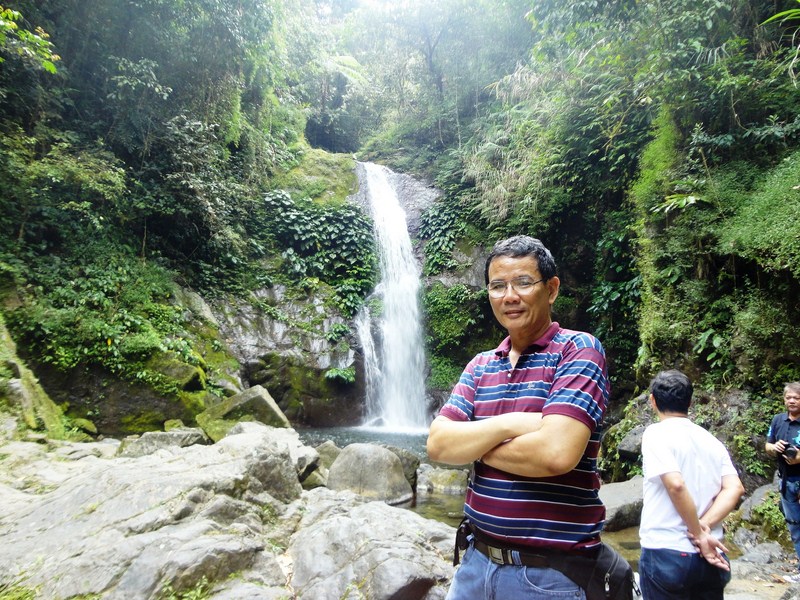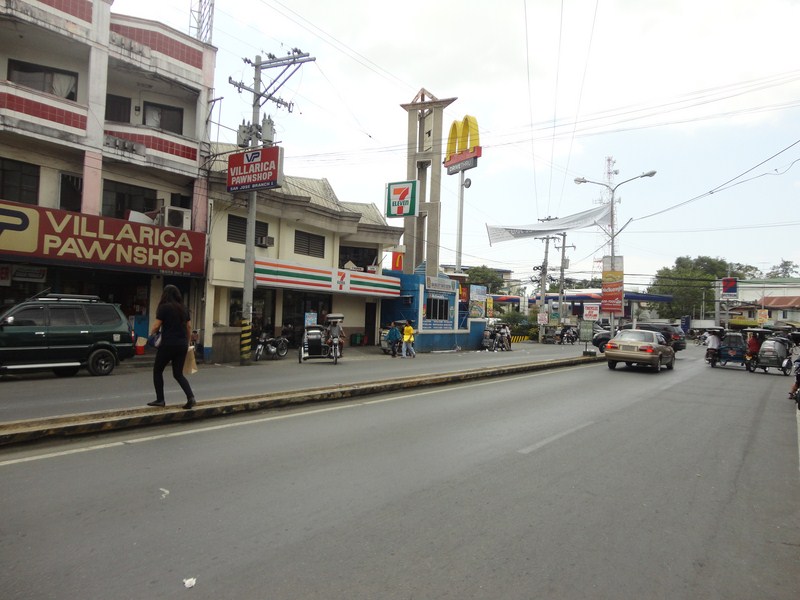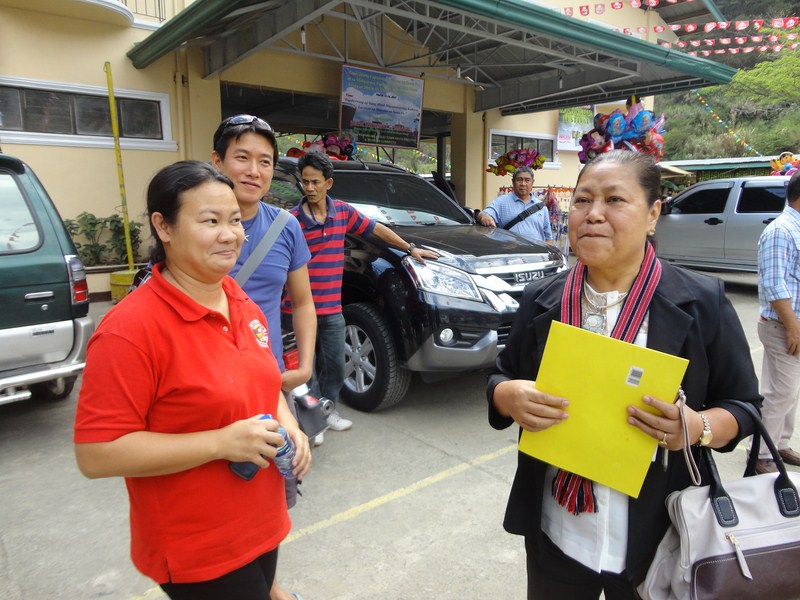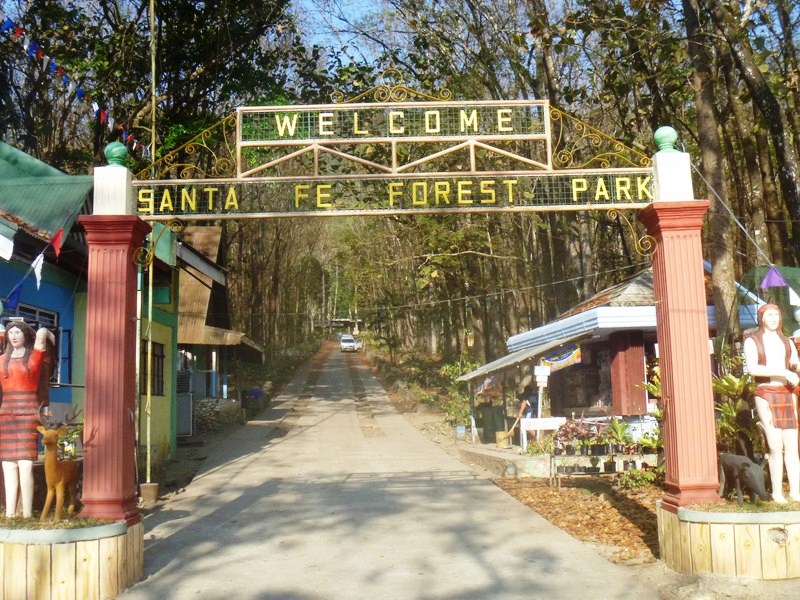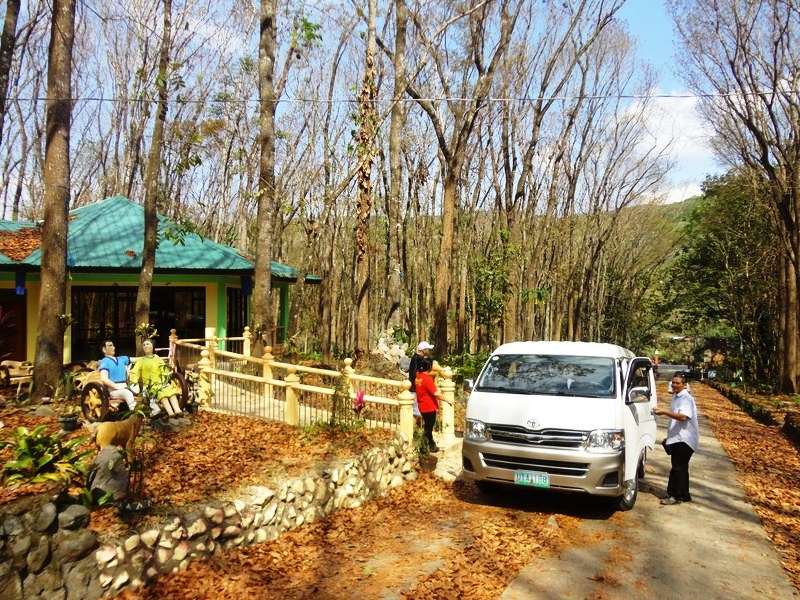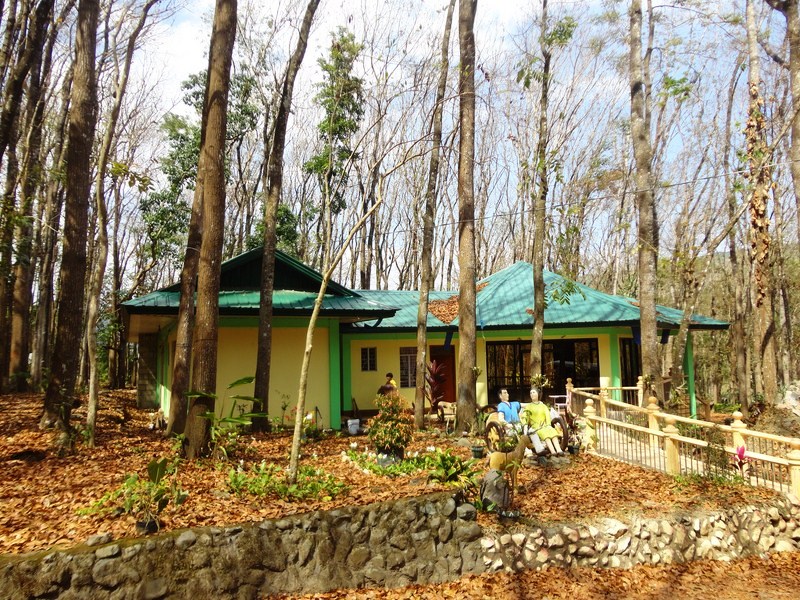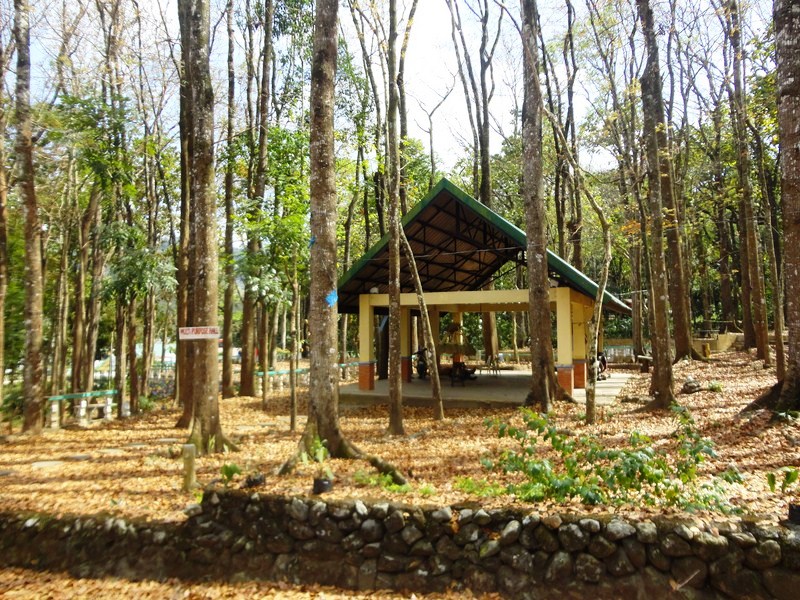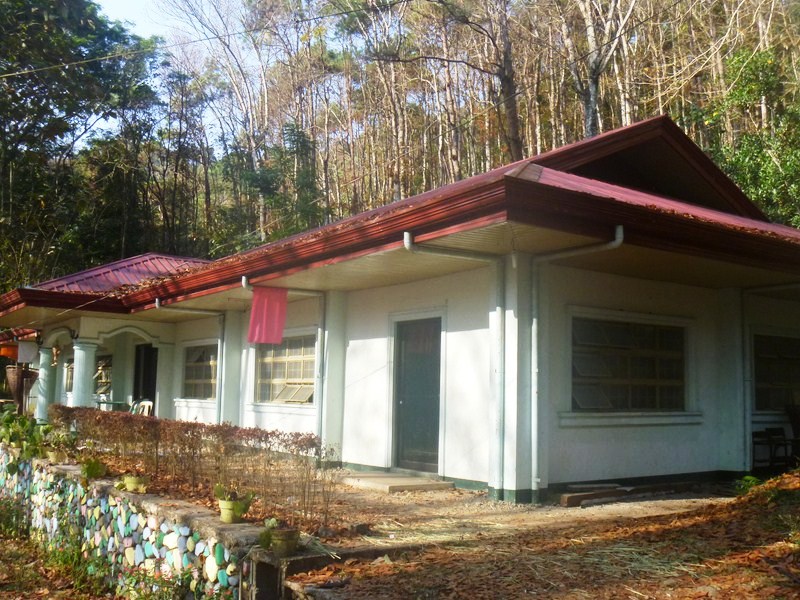The next day, after breakfast, we observed the beautiful and colorful parade of 16 floats (each representing a barangay) along the National Highway as wound its way to the Santa Fe Sports and Cultural Center at the town proper.
Each float had their barangay’s beauty candidate, wearing a Kalanguya costume, on board. Floats were also bedecked with the barangay’s farm produce (chayote, eggplants, tomatoes, carrots, sweet potatoes, ginger, bananas, pechay, pineapples, etc.), baskets, walis tambo (tiger grass brooms) and flowers.
At the town proper, the street dancing competition unfolded with a street performance held in front of the municipal hall and the ground demonstrations at the Santa Fe Sports and Cultural Center. Both showcased the Kalanguya’s costumes, dance and musical instruments.
Alexis, Roel, Ms. Lelia E. Blancaflor (DOT Region 2 acting director), Ms. Imelda A. Garduque, also from DOT Region 2, and I were asked to judge the competition. We would also do so for the float competition. Three contingents – Kalahan, Canabaan National High School and Sta. Fe National High School presented story lines regarding a particular Kalanguya practice.
We also observed the padit, a grand canao (socio-religious celebration) ritual featuring the traditional (but shocking to others) butchering of pigs, native chickens and 2 carabaos. These were then boiled and served to all attendees. Tapey (native wine) was also served to guests while the bah-liw was chanted by tribal elders.
Later, officials, guests and barangay officials danced the tayaw, to the beat of gangha or gangsa (gongs). Indigenous sports such as bultong (wrestling), tug-of-war, bamboo pole climbing, wood chopping, gayang (spear throwing), hanggol (arm wrestling) and dapapnikillum (pig catching) plus tapey drinking and group chanting of the bah-liw were also featured.
Within the festival venue are 16 booths selling jams and jellies made from guava, santol, bignay or wild berries; farm produce such as camote, gabi, vegetables, yakun, sayote, etc.; Ifugao handicrafts such as rattan baskets, woodcarvings; tiger grass soft brooms; and exotic and beautiful handwoven fabrics used as tapis by women and g-strings by the men.
Sta. Fe Municipal Hall: Poblacion, Sta. Fe, Nueva Vizcaya. E-mail: info@santafe.gov.ph. Website: www.santafe.gov.ph.

